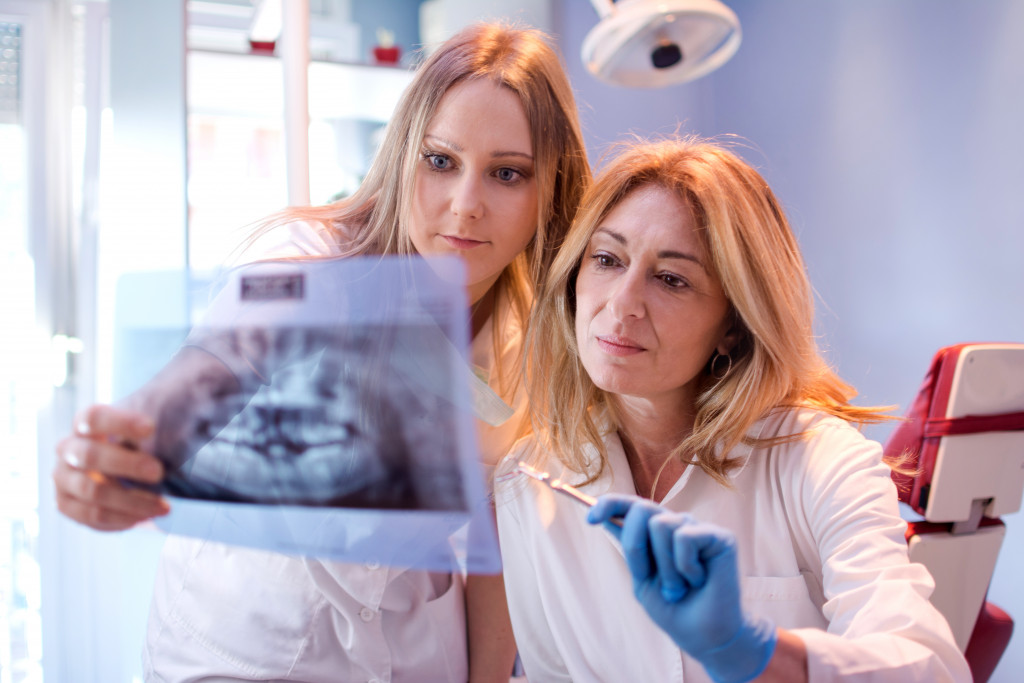- Implementing dental technology in your practice can significantly enhance patient experience and satisfaction.
- Technology has played a critical role in improving the patient experience by allowing for minimally invasive procedures.
- 3D printing drives innovation in the dental industry and improves the overall patient experience.
- Digital X-rays use less radiation, provide more detailed images, and can be viewed on a computer screen within seconds.
- Intraoral cameras enable patients to see what the dentist sees during diagnosis and treatment planning.
As a dental professional, you know that the comfort and satisfaction of your patients are your top priority. Patients expect convenience, efficiency, and comfort in today’s fast-paced world.
Incorporating the latest dental technology into your practice can significantly enhance patient experience and satisfaction. Read below to learn the benefits of implementing dental technology in your practice and the available options.
The Importance of Improving Patient Experience
Dentistry is widely known as a profession that requires dental skills and advanced communication skills. Therefore, the patient experience must be treated as a significant aspect of dental healthcare.
It is no secret that patients dread going to the dentist due to the anxiety and discomfort associated with most dental procedures. However, technology has played a critical role in improving patient experience in dentistry.
The Role of Technology

One of the primary benefits of technology in dentistry is that it allows for minimally invasive procedures. This means that systems are no longer as invasive and complicated as they used to be, causing less patient anxiety. With the aid of technology, procedures, such as drilling and filling, have been improved to be less painful and quick.
In addition, modern technology has enabled dental professionals to diagnose diseases and conditions much earlier, allowing for more effective treatment. This also improves patient satisfaction due to less pain and quicker procedures.
Dental Technologies Today
Dental practitioners use a wide range of technologies to improve patient experience. Each technology has its advantage, and no two technologies are the same. Some of the more common dental technologies used today are:
3D Printing
Dental anxiety is a common fear many people face when visiting the dentist. With advancements in technology, dentists can now provide patients with a more comfortable and personalized experience. 3D printing drives innovation in the dental industry and improves the overall patient experience.
Leveraging 3d printing in dentistry enables dental professionals to quickly create models of teeth and mouth structures with great accuracy. This allows for more accurate diagnosis and treatment plans, making visits to the dentist much smoother.
Digital X-rays
Digital X-rays significantly improve over traditional film X-rays, which are time-consuming and harmful. Digital X-rays use less radiation, provide more detailed images, and the images can be viewed on a computer screen within seconds.
Patients don’t have to wait for the X-rays to develop, making the process faster and more convenient. Digital X-rays also offer secure electronic storage, eliminating the need for physical storage space and reducing the risk of lost or damaged files.
Intraoral Cameras
Intraoral cameras are devices that take high-quality pictures of the inside of a patient’s mouth. These images can be shown on a screen, which allows the patient to view the same visual information as the dentist.
The use of intraoral cameras improves patient understanding, confidence, and trust. Patients are more likely to accept recommended treatments when they can see the condition of their teeth and gums with their own eyes.
CAD/CAM Technology
CAD/CAM (Computer-Aided Design/Computer-Aided Manufacturing) technology allows dental professionals to design and fabricate restorations, such as crowns, bridges, and veneers, in-house.
CAD/CAM technology eliminates the need for traditional impressions, which are uncomfortable for patients and can cause inaccuracies. Patients can receive high-quality, precision-fitted restorations in one visit, reducing the need for multiple appointments.
Dental Lasers

Dental lasers offer a minimally invasive alternative to traditional dental procedures. Dental lasers can be used for various treatments, including gum disease therapy, cavity removal, and teeth whitening. Laser treatment is more precise and less painful than traditional methods, and patients experience less bleeding, swelling, and discomfort.
Patient Communication Software
Patient communication software facilitates effective communication between dental professionals and patients before, during, and after appointments. It allows for secure messaging, automatic appointment reminders, and feedback requests.
Patients can receive personalized attention, which enhances their experience and satisfaction. The software also streamlines workflow, allowing dental professionals to focus on providing quality care.
Final Thoughts
The benefits of incorporating dental technology into your practice cannot be overstated. Using digital X-rays, intraoral cameras, CAD/CAM technology, dental lasers, and patient communication software improves patient experience, comfort, and satisfaction. Patients appreciate the convenience, efficiency, and accuracy of modern dental technology. As a result, implementing dental technology can lead to increased patient retention, referrals, and revenue.



